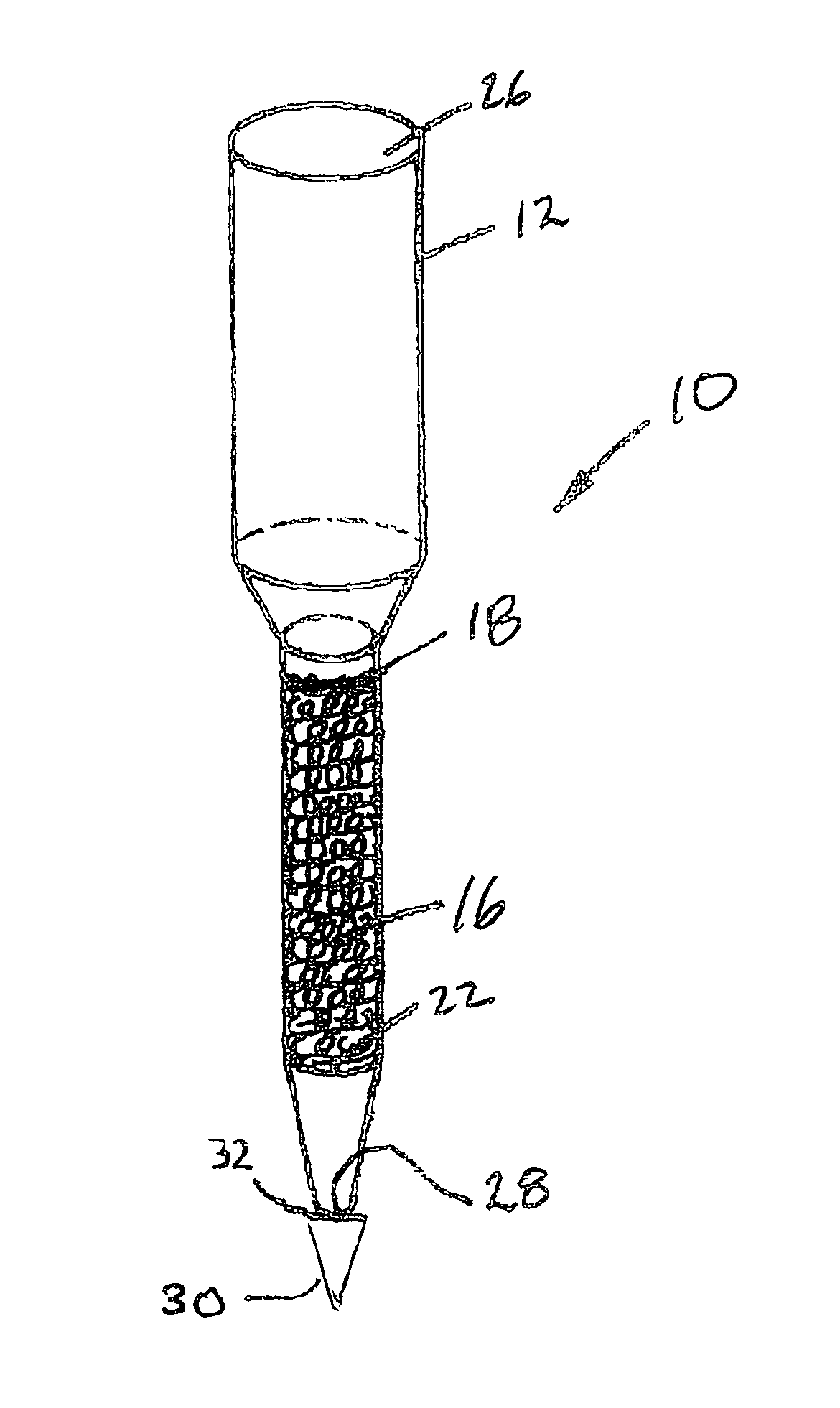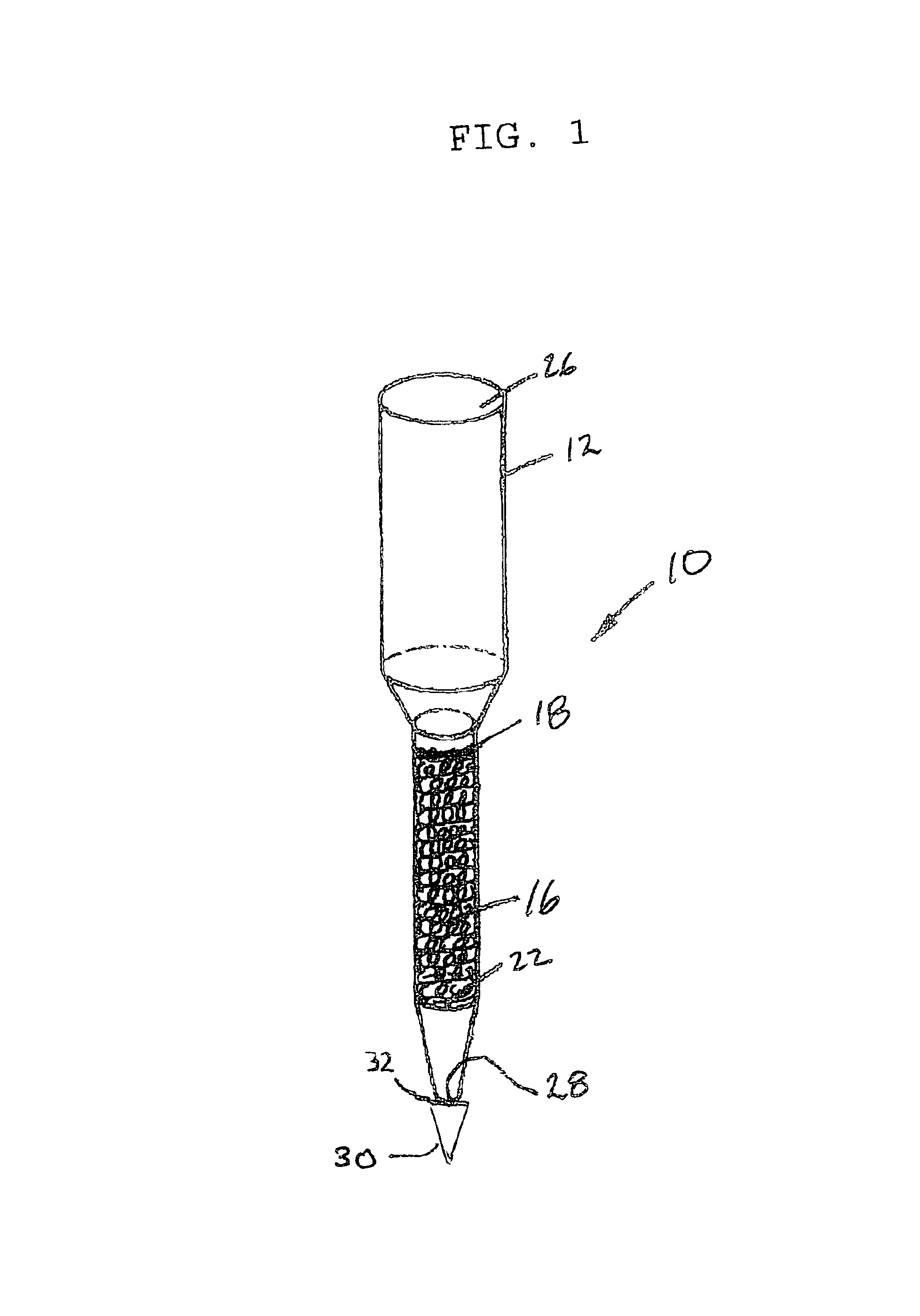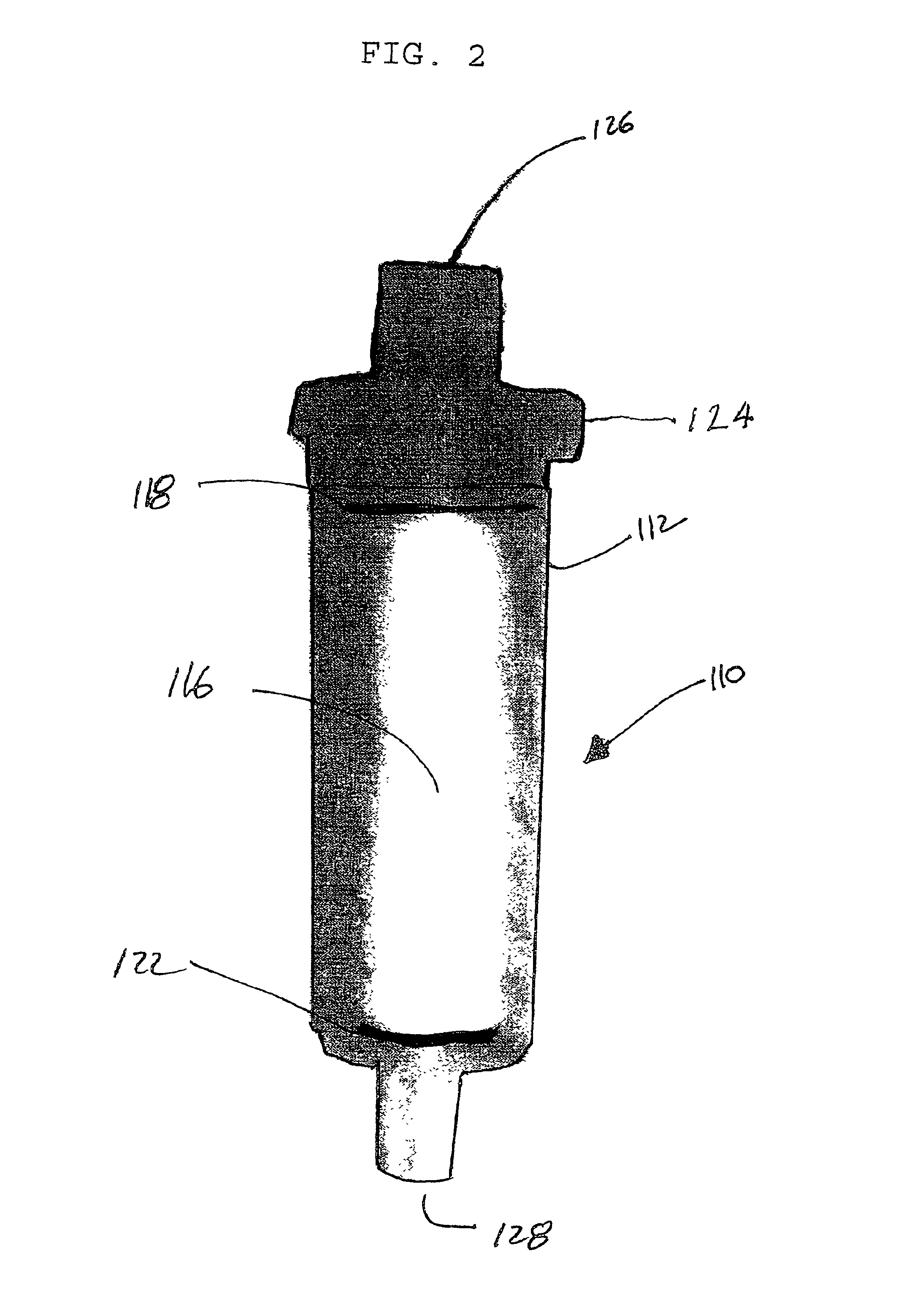Anti-microbial and oxidative co-polymer
a technology of oxidative copolymer and anti-microbial, which is applied in the direction of filtration separation, other chemical processes, separation processes, etc., can solve the problems of arsenic poisoning of drinking water in some parts of the world, scarce drinking water, and inability to stabilize themselves
- Summary
- Abstract
- Description
- Claims
- Application Information
AI Technical Summary
Benefits of technology
Problems solved by technology
Method used
Image
Examples
example 1
Preparation of a Polymeric Medium
[0133]One process for preparing the 2 percent DVB cross-linked resin includes mixing gelatin (about 1.35 grams), poly(diallyldimethylammonium chloride) (about 12.3 grams), boric acid (about 5.1 grams), and water (about 450 grams) in a flask. The mixture is adjusted to a pH of approximately 10.0 with 25 percent aqueous sodium hydroxide.
[0134]A solution of styrene (about 214 grams), chloromethylstyrene (about 75 grams), technical grade 55 percent divinylbenzene (about 10.9 grams), and azobisisobutyronitrile (about 1.5 grams) is then added to the flask. The material in the flask is heated to a temperature of about 70° C., continuously stirred, and maintained under a nitrogen purge for approximately 17 hours during which time cross-linking occurs. Cross-linking causes generally spherical shaped droplets to form. Polymerized spheres are then removed from the mixture. The chloromethylated co-polymer is soaked at room temperature in a solution of 10 volume ...
example 2
Iodine Elution
[0139]Two studies were carried out to assess the ease with which iodine could be eluted from a contemplated polymeric medium. In the first study, a strong base anion exchange resin in triiodide form denominated A-605 available from Purolite Company, Bala Cynwyd, Pa. was compared to a contemplated polymeric medium. The A-605 resin was said to be a styrene divinylbenzene gel resin having a wet screen size of about 16 to about 50. The contemplated polymeric medium was a chloromethylated styrene divinylbenzene that was reacted with pyridine, and the chloride present was exchanged for triiodide to provide about 0.2 moles of triiodide per kilo.
[0140]In the first study, using the procedure of PSTM-95 (Product Standard Test Method-95) that involved eluting a sample of the assayed material with sodium hydroxide and back titration of an aliquot with sodium thiosulfate showed that the A-605 contained 12 grams of iodine per 25 mL of resin, whereas no iodine was found by this proce...
example 3
Preparation of Aseptic Water
[0145]A 40 gallon water tank used for recirculating water for a decorative pool was connected in a closed system to a column containing 300 mL of a contemplated polymeric medium supported on a porous frit. A pump maintained a flow rate of 450 mL per minute through the column of polymeric medium.
[0146]One hundred milliliter aliquot samples were taken from the tank on Aug. 23, 2000 and again on Oct. 25, 2000. Each of the samples was assayed by G&L Laboratories of Quincy, Mass. for Pseudomonas aeruginosa and Legionella present in each of the aliquots using colony-forming standard assay procedures. The results of that study are shown in the Microbial Assay Table below.
[0147]
Microbial AssayColonies onColonies onMicrobeAug. 23, 2000Oct. 25, 2000Pseudomonas aeruginosa1403Legionella
[0148]As can be readily seen, a contemplated polymeric medium was particularly useful in reducing the load of Pseudomonas aeruginosa in the water tank.
PUM
| Property | Measurement | Unit |
|---|---|---|
| pore size | aaaaa | aaaaa |
| diameter | aaaaa | aaaaa |
| volume | aaaaa | aaaaa |
Abstract
Description
Claims
Application Information
 Login to View More
Login to View More - R&D
- Intellectual Property
- Life Sciences
- Materials
- Tech Scout
- Unparalleled Data Quality
- Higher Quality Content
- 60% Fewer Hallucinations
Browse by: Latest US Patents, China's latest patents, Technical Efficacy Thesaurus, Application Domain, Technology Topic, Popular Technical Reports.
© 2025 PatSnap. All rights reserved.Legal|Privacy policy|Modern Slavery Act Transparency Statement|Sitemap|About US| Contact US: help@patsnap.com



